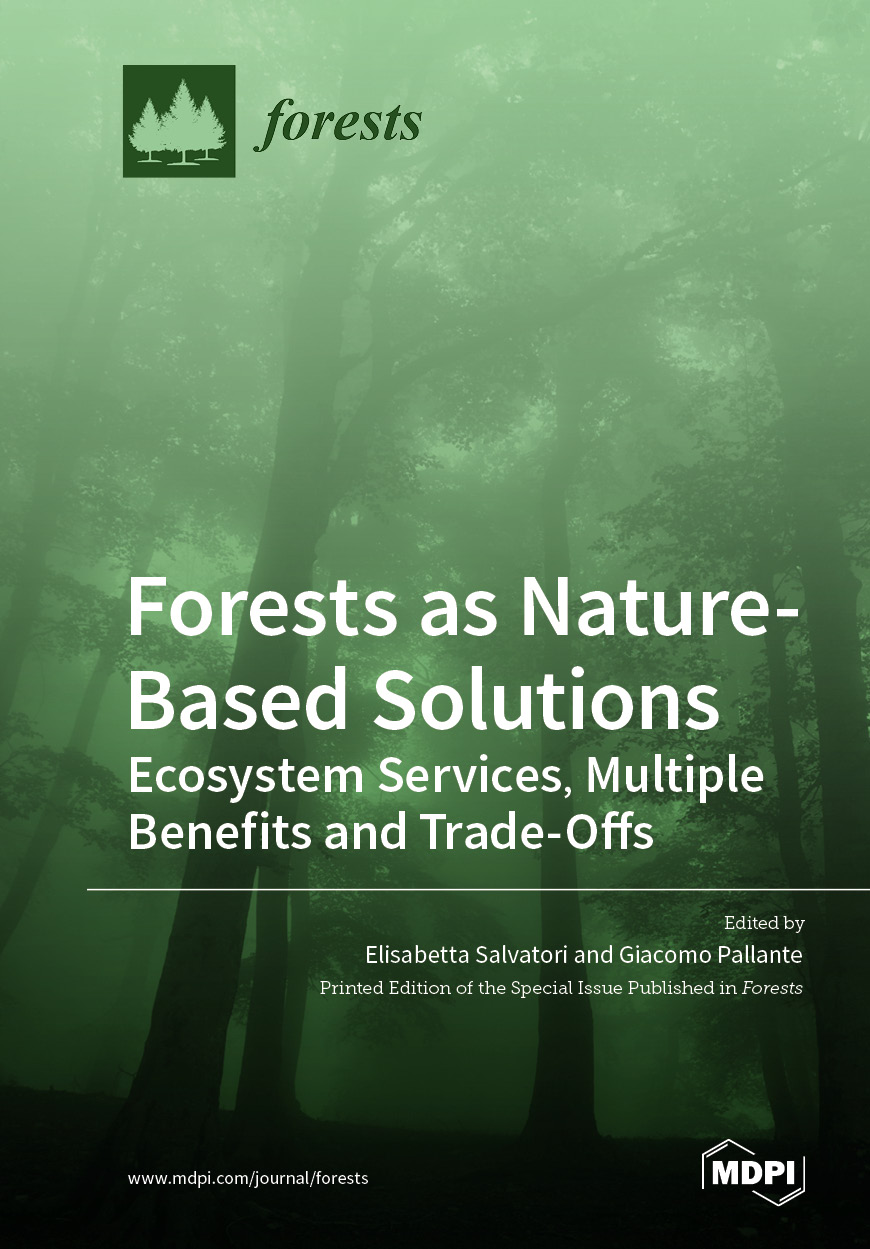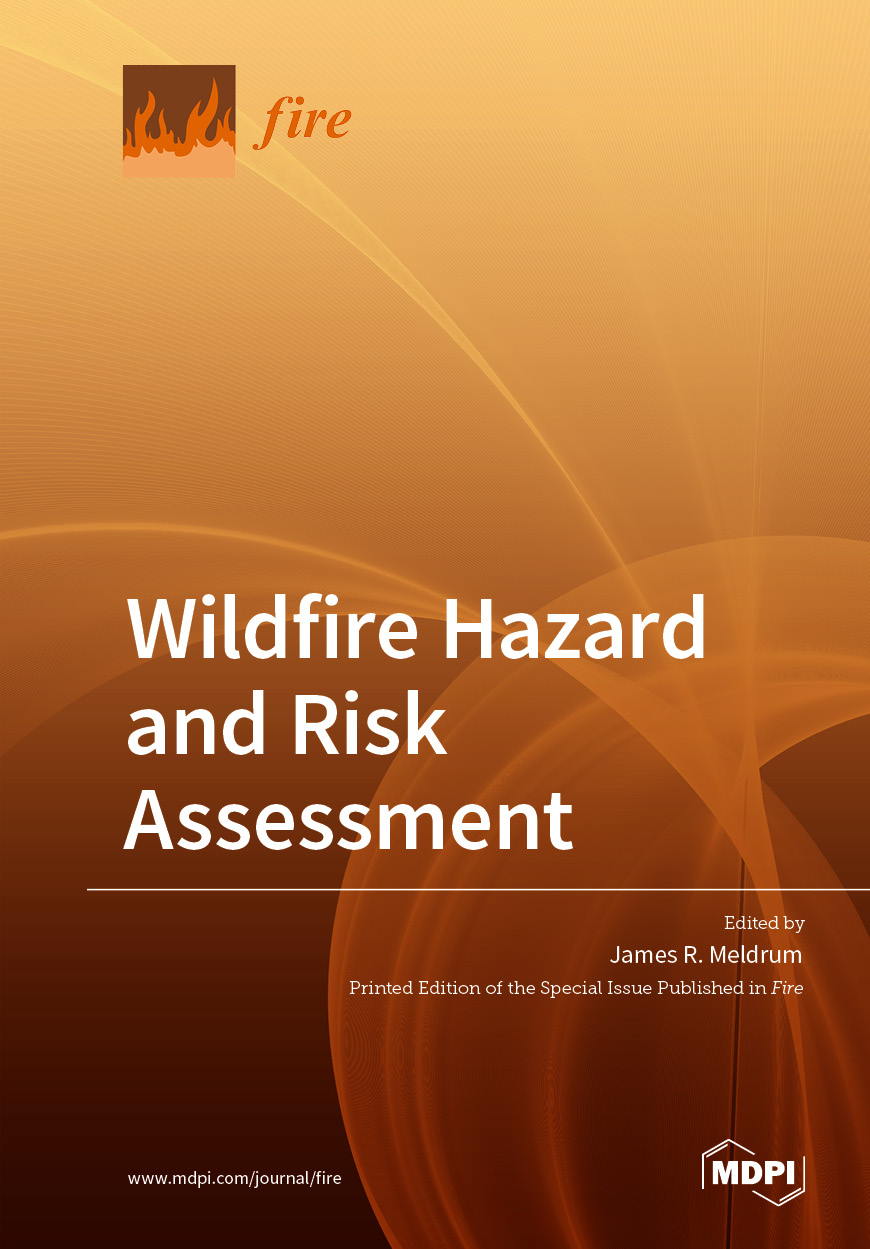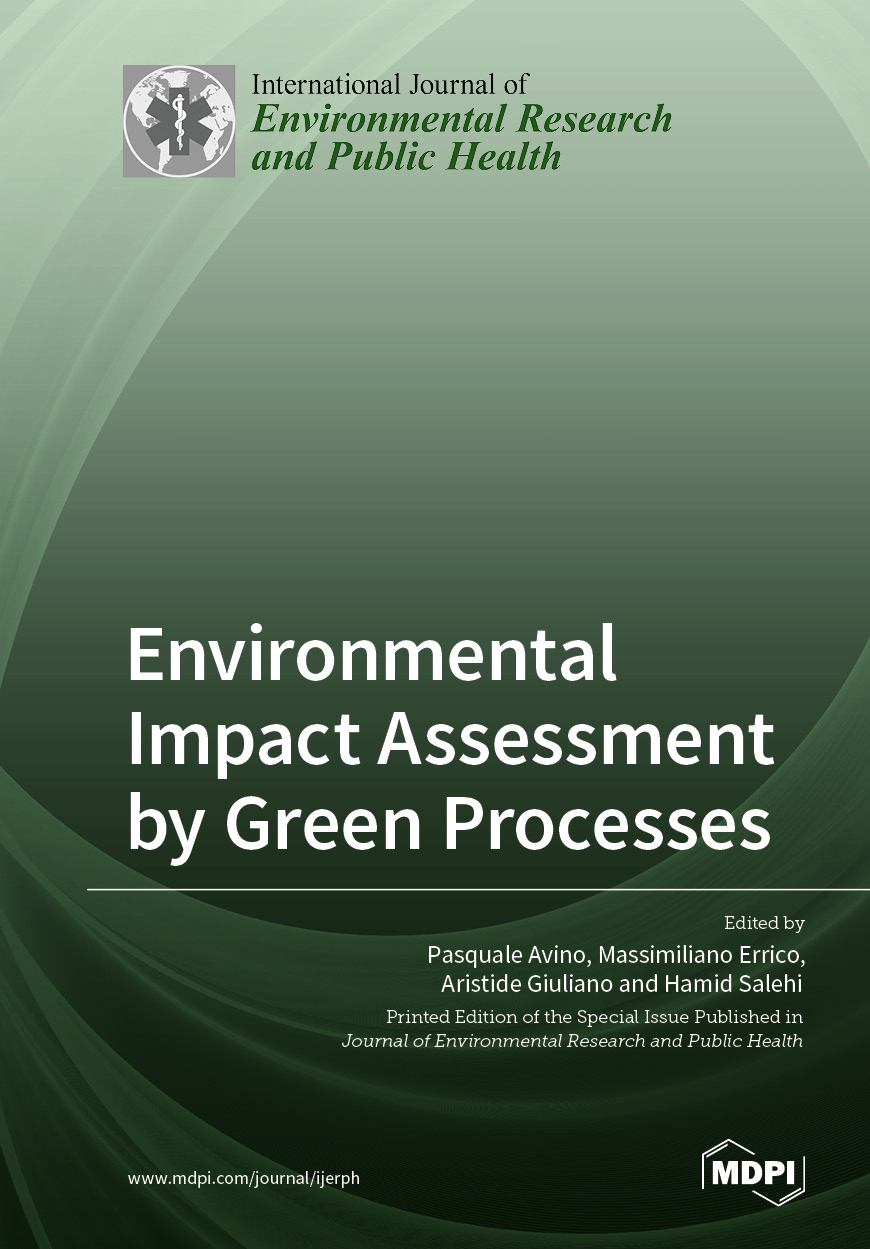
Journal Menu
► ▼ Journal Menu-
- IJGI Home
- Aims & Scope
- Editorial Board
- Reviewer Board
- Topical Advisory Panel
- Instructions for Authors
- Special Issues
- Topics
- Topical Collections
- Article Processing Charge
- Indexing & Archiving
- Editor’s Choice Articles
- Most Cited & Viewed
- Journal Statistics
- Journal History
- Journal Awards
- Society Collaborations
- Conferences
- Editorial Office
Journal Browser
► ▼ Journal BrowserNeed Help?
Announcements
3 July 2023
Meet the Editors | Interview with Prof. Dr. Hartwig H. Hochmair—Associate Editor of ISPRS International Journal of Geo-Information

We had the pleasure of speaking with the Associate Editor of the ISPRS International Journal of Geo-Information (IJGI, ISSN: 2220-9964), Prof. Dr. Hartwig H. Hochmair. Our goal is to present a behind-the-scenes look at the journal and provide insights into the Associate Editor's perspective on the publishing process.
The following is a short Q&A with Prof. Dr. Hartwig H. Hochmair, who shared his vision for the journal with us, as well as his views of the research area and open access publishing:
1. Could you please introduce yourself?
I am a professor of geomatics at the University of Florida (UF) where I lead the Geomatics program at the UF Fort Lauderdale campus (which is not far from Miami) and enjoy the South Florida climate and lifestyle. As an Associate Editor of IJGI, I handle submissions that fall into the areas of location-based services and trajectory analysis. My family background of land surveyors and education in geomatics led me to my interest and career in GIS and geospatial analysis, which is a rapidly evolving field that presents itself with new challenges and opportunities every day. I have always enjoyed cycling, including road and mountain biking, especially in my home country of Austria, which has influenced my research interests, which include, among others, the modeling of bicycle travel, wayfinding, and in general, the analysis of non-motorized transportation.
2. Could you give us a short overview of the research you are currently undertaking?
My research covers several topical areas but focuses primarily on the spatial analysis of geographic information to address key issues of sustainable transportation, assessing the usability of crowd-sourced geodata, and modeling the spread of invasive species (e.g., termites, tegus) in South Florida. Especially for the latter topic, I enjoy collaborations with faculty from other disciplines that are present at the UF Fort Lauderdale campus, including wildlife ecology or entomology. As an example, we just published a paper (https://rdcu.be/dfaWb) which uses a lattice-based simulation model to predict the infestation locations of a specific subterranean termite in Key West from initial encounter points. Prediction and infestation areas can have a large economic impact since subterranean termites are destructive insect pests that cause billions of dollars in property damage every year. My research group also explores the wide range of social media apps, and, in general, crowd-sourcing platforms and initiatives, which provide a wealth of spatial information for all kinds of analyses, which we summarized in a recent IJGI publication (https://www.mdpi.com/2220-9964/9/9/526). One related topic we work on is the use of crowdsourced information to determine the effects of COVID-19 on travel behavior. For example, we analyze which social media platforms provide spatio-temporal trajectory data that best reflect travel restrictions (e.g., stay-home orders) posed by regulatory agencies, and how the origins of visitors of points of interest (e.g., Florida State Parks) have changed through the pandemic (e.g., visitors become more local). Another current research topic I am collaborating on is the use of generative AI for the enhancement of crowd-sourced information, such as OpenStreetMap, by fusing data from different sources through different AI tools.
3. As IJGI is an open access journal, can you share with us your opinion regarding the open access model of publication?
Open access leads to enhanced visibility and impact (citations) of a paper and allows it to reach a broader audience compared to traditional publications behind paywalls. It provides, therefore, some advantages for authors, as long as the authors’ institutions have the financial means to pay the Article Processing Charge (APC) or are given exemptions from APC in case of financial hardship. However, the quality and credibility of open access journals can vary widely, and it is paramount for an open access journal to maintain its reputation and legitimacy to distinguish itself from predatory publishers and journals, e.g., through a reputable editorial board and a strict and independent review process.
4. As an editor, what do you look for most to determine if a paper will be published in the journal?
Content and form. The manuscript needs to fit the scope of the journal and appeal to its general readership. If the topic is too specific or lacks a geo-context, it may be deferred to another journal. A manuscript needs to present novel research and underline new findings or improvements quantitatively, e.g., through statistical models, or other methods which are able to evaluate a research hypothesis. It is also important for authors to present the content in a format that successfully conveys the research idea. This includes appropriate formatting and language, legible charts and figures, and a logical, coherent flow of thoughts and explanations.
5. What makes IJGI different from other journals in the field and why would a scholar choose our journal to submit their research?
One of the big differences to many other journals is that IJGI is associated with (and owned by) a large professional society, namely the International Society for Photogrammetry and Remote Sensing, which increases its reputation and credibility. The journal is indexed in several abstract and citation databases and has gradually improved its journal rank and impact factor over the years. It also provides promotion of selected papers through various awards, which may give an additional incentive for authors to submit their manuscripts to this journal.
3 July 2023
MDPI Insights: The CEO's Letter #1 - Open Access and Impactful Research

Welcome to the MDPI Insights: The CEO's Letter.
In these monthly letters, I will showcase two key aspects of our work at MDPI: our commitment to empowering researchers and our determination to facilitating open scientific exchange.
Opening Thoughts
The Future is Open, and MDPI is Leading the Way
I strongly believe in a future that embraces openness, where open source, open information, and open access (OA) take center stage. This belief that led me to join MDPI in 2020, and I am honored to have recently been appointed as Chief Executive Officer (CEO). In this capacity, and operating in close liaison with Dr. Lin and MDPI’s senior management, I shall work to build on Dr. Lin’s achievements of the past quarter-century. In this role, I will focus on communication initiatives to promote MDPI's remarkable work and continue to build our company as a trusted leader in OA publishing. For over two decades, MDPI has been at the forefront of reshaping the academic publishing landscape, with OA surpassing subscription-based publishing in 2020. This trajectory is deeply rooted in our history and reflects our unwavering commitment and vision for an open future.
1 Million Published Articles
2023 began with a remarkable achievement for MDPI, as we became the first OA publisher to reach the milestone of 1 million published articles. This represents 2.7 million unique authors who have trusted us with their work, or about a third of all researchers worldwide. As the world's most cited OA publisher, we are proud in sharing these significant milestones.
Our mission remains unchanged: to make science open and accessible to all. We understand the importance of knowledge access, empowering researchers to stay at the forefront of a rapidly changing world. Our diverse range of journals covers a wide spectrum of disciplines, offering cutting-edge insights, trusted tools, and crucial knowledge to address global challenges.
Liberating Science
As the world’s leading OA publisher, MDPI is actively liberating science. We are committed to eliminating the frustrations researchers and the general public face when accessing information, ensuring it is not locked behind paywalls. We firmly believe that everyone has a right to information, and our commitment to open access publishing drives our work.
In this inaugural edition of Insights: The CEO's Letter, I draw inspiration from the upcoming 20th anniversary of the Berlin Declaration on Open Access. Its stated mission reminds us that true impact is achieved when knowledge is widely and readily available to society:
"Our mission of disseminating knowledge is only half complete if the information is not made widely and readily available to society”
Impactful Research

MDPI Publishes Impactful Research: Recognized by Leading Indexing Databases
MDPI journals are indexed in every single top database in the world.
As of June 2023, we have 214 journals indexed within Web of Science, 223 indexed within Scopus, 87 indexed within PubMed and PMC, and 17 indexed within MEDLINE, and these numbers increase every month. We constantly strive to expand the coverage of our journals within leading multi-disciplinary and scope-specific databases, resulting in an incredibly broad range of journals that are indexed within a variety of databases. MDPI has active relationships with approximately 65 well-known databases around the world, and we continue to expand our portfolio every year so that your work can be found, cited, and referenced with ease.
Continued Growth of MDPI Journals
The 2022 Scopus and Web of Science journal citation metrics were officially released in June, and I am pleased to report that 31 MDPI journals received their first CiteScore, taking the total number of journals with a CiteScore to 216. The number of MDPI journals receiving an Impact Factor (IF) also continues to grow with 111 receiving their first, by being covered in the ESCI, bringing our total number of journals with an IF to 208 of which 41 journals received an IF above 4.0. Looking at 2022 CiteScores in the Scopus database, 80% of MDPI journals have a score that ranks them in Q1 or Q2 in at least one subject category.
Publishing impactful science would not be possible without all of our authors, editors and reviewers. Thank you for your contribution and continued support! Together we share the latest scientific insights faster and ensure that your work is accessible to all.
Read more
Inside MDPI

Preprints.org: Clarivate adds the Preprint Citation Index to the Web of Science
At MDPI, we are dedicated to driving the advancement of science. Through our initiative, Preprints.org, researchers can publish their work and gain valuable feedback from the broader research community, ensuring rapid progress in their respective fields. This is particularly crucial during times of health and climate challenges, where timely dissemination of findings is essential.
Increased Visibility for Preprints
I am pleased to share that Clarivate recognizes the significance of preprints and has taken a crucial step to enhance their visibility. Clarivate has added the Preprint Citation Index to the Web of Science, encompassing preprints published not only on Preprints.org but also on other reputable repositories.
Looking ahead, the future of preprints appears promising, bolstered by the recent indexing announcement from the Web of Science. As a result, preprints will receive increased visibility, serving as a valuable resource for staying informed about the latest research developments.
Read more
What are Preprints?
The Pros and Cons of Preprints
Preprints and COVID-19
Preprints—The Future of Open Access Publishing?
Coming Together for Science
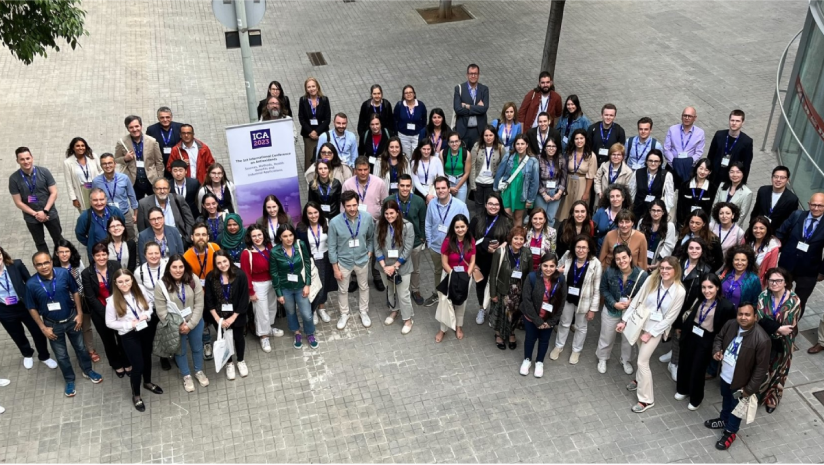
The First International Conference on Antioxidants: Sources, Methods, Health Benefits and Industrial Applications
In this edition of ‘Coming Together for Science,’ I am pleased to highlight the First International Conference on Antioxidants organized by our conference team in the beautiful city of Barcelona, Spain. The conference attracted over 130 attendees, who engaged in 42 talks, and 89 poster presentations spread across several sessions.
Working Together
Under the leadership of Prof. Dr. Alessandra Napolitano (Department of Chemical Sciences, University of Naples ‘Federico II’, Naples, Italy) and Prof. Dr. Rosa M. Lamuela Raventos (Department of Nutrition, Food Sciences and Gastronomy, University of Barcelona, Spain) as chairs, and supported by the committee members, 10 invited keynote speakers, poster presenters, and all the attendees, this dedicated group of academics came together to discuss the natural sources, methodologies, health benefits, and industrial applications of antioxidants.
Especially noteworthy is the positive feedback received from attendees, with 94% rating the overall organization of the conference as good or excellent. I particularly love the picture above, capturing the gathering of some of the participants. You can browse through more photos in the event gallery located here.
Managing Events With Sciforum
If you are considering hosting your own academic event, I highly recommend checking out Sciforum, MDPI's event management platform. Sciforum simplifies the entire process, making it easy to host your own event by allowing you to focus on what really matters: Science!
Read more
Closing Thoughts
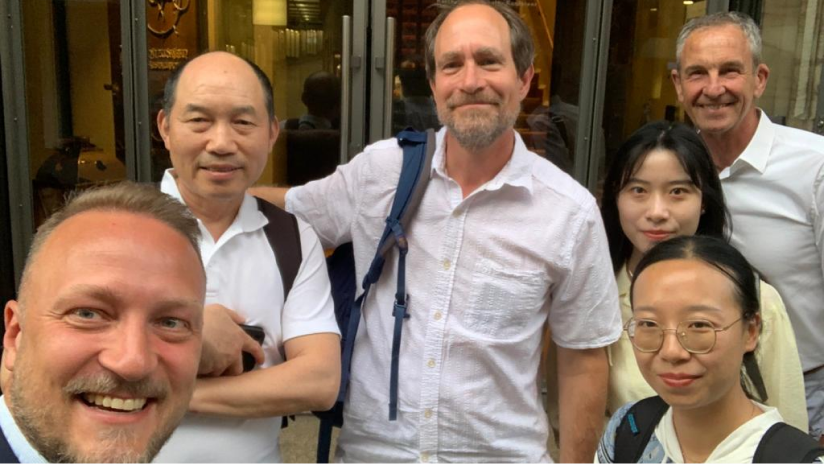 Stefan Tochev, Dr. Shu-Kun Lin, Dr. Eric O. Freed, Peter Roth, Wynne Wang, Allison Yang
Stefan Tochev, Dr. Shu-Kun Lin, Dr. Eric O. Freed, Peter Roth, Wynne Wang, Allison Yang
Viruses and Editorial Quality: Acknowledging the Dedication of our Viruses Journal Team
During a June meeting with Dr. Eric O. Freed, the founding and current Editor-in-Chief of our journal Viruses, I was reminded of the exceptional dedication of our editorial board. Meeting with Eric is a pleasure, as he has a strong commitment and clear vision for the journal. Over the course of two days, we gained a deep understanding of the journal’s expectations and focus on strategic growth, editorial board representation, and engagement.
I am pleased to share that Viruses holds a CiteScore of 7.1 (an increase of 7.57% versus the 2021 metric) and an Impact Factor of 4.7. You can view the journal statistics here. Viruses publishes highly cited papers, and is indexed in renowned databases such as Scopus, SCIE (Web of Science), PubMed, and others, and maintains affiliations with prestigious societies. Moreover, the Viruses team has recently announced an exciting upcoming event titled ‘Viruses 2024 – A World of Viruses,’ scheduled to take place in Barcelona, Spain, from 14–16 February 2024.
Testimonials
If you notice my enthusiasm regarding our editorial service, it’s because the surveys and testimonials we receive speak volumes about the experiences of our authors, reviewers, and guest editors who collaborate with MDPI. The purpose of these letters is to highlight the exceptional work that we do and the experiences we create for the scholars – thus, let me end with this testimonial from an author:
“It was a great pleasure to publish in Viruses Special Issue [Emerging Viruses in Aquaculture]. The submission process was easy. Guest editors were very helpful and provided all the guidance and support as needed. The handling of the manuscript by the Editorial Team was very fast, efficient, and professional. The reviewer’s comments were insightful, and the publication processes were remarkably rapid.”
– Ms. Magdalena Stachnik, Państwowy Instytut Weterynaryjny | PIWet
Article in Viruses: Emerging Viral Pathogens in Sturgeon Aquaculture in Poland: Focus on Herpesviruses and Mimivirus Detection
Chief Executive Officer
MDPI AG
28 June 2023
2022 Impact Factors for MDPI Journals
The 2022 citation metrics have been released in the Journal Citation Reports (JCR), and we’re pleased to announce the following results for MDPI journals:

We are thrilled to announce that 90% of our ranked MDPI journals, specifically 86 out of 96 (captured in the table below), are performing above average in Q1 or Q2. This year, Clarivate has expanded its Impact Factor (IF) awards to include journals in the Emerging Sources Citation Index (ESCI) and the Arts and Humanities Citation Index (AHCI), providing greater transparency for the full set of journals indexed in the Web of Science Core Collection. As a result, 111 of MDPI journals have received their first IF in 2023, with 37 journals surpassing an IF of 3.0. In total, 208 MDPI journals have been honored with an IF.
Clarivate explains that by "expanding the coverage but holding to highly selective standards, the [Impact Factor] is now a reliable indicator of trustworthiness, as well as a measure of scholarly impact, at the journal level."
Please visit our blog post where we discuss the release of the latest citation metrics with our Indexing Manager, Dr. Constanze Schelhorn, to find out what's different this time around and how to make use of different metrics available.
| Journal | Impact Factor | Rank Quartile | Category |
| Vaccines | 7.8 | Q1 | Immunology |
| Medicine, Research & Experimental | |||
| Antioxidants | 7.0 | Q1 | Food Science & Technology |
| Biochemistry & Molecular Biology | |||
| Chemistry, Medicinal | |||
| Cells | 6.0 | Q2 | Cell Biology |
| Nutrients | 5.9 | Q1 | Nutrition & Dietetics |
| International Journal of Molecular Sciences | 5.6 | Q1 | Biochemistry & Molecular Biology |
| Q2 | Chemistry, Multidisciplinary | ||
| Journal of Theoretical and Applied Electronic Commerce Research | 5.6 | Q2 | Business |
| Biomolecules | 5.5 | Q1 | Biochemistry & Molecular Biology |
| Biosensors | 5.4 | Q1 | Chemistry, Analytical |
| Instruments & Instrumentation | |||
| Q2 | Nanoscience & Nanotechnology | ||
| Fractal and Fractional | 5.4 | Q1 | Mathematics, Interdisciplinary Applications |
| Marine Drugs | 5.4 | Q1 | Chemistry, Medicinal |
| Pharmacology & Pharmacy | |||
| Pharmaceutics | 5.4 | Q1 | Pharmacology & Pharmacy |
| Nanomaterials | 5.3 | Q1 | Physics, Applied |
| Q2 | Chemistry, Multidisciplinary | ||
| Materials Science, Multidisciplinary | |||
| Nanoscience & Nanotechnology | |||
| Cancers | 5.2 | Q2 | Oncology |
| Foods | 5.2 | Q1 | Food Science & Technology |
| Polymers | 5.0 | Q1 | Polymer Science |
| Remote Sensing | 5.0 | Q1 | Geosciences, Multidisciplinary |
| Q2 | Remote Sensing | ||
| Imaging Science & Photographic Technology | |||
| Environmental Sciences | |||
| Antibiotics | 4.8 | Q1 | Pharmacology & Pharmacy |
| Q2 | Infectious Diseases | ||
| Drones | 4.8 | Q2 | Remote Sensing |
| Journal of Functional Biomaterials | 4.8 | Q2 | Engineering, Biomedical |
| Materials Science, Biomaterials | |||
| Biomedicines | 4.7 | Q1 | Pharmacology & Pharmacy |
| Q2 | Biochemistry & Molecular Biology | ||
| Medicine, Research & Experimental | |||
| Journal of Fungi | 4.7 | Q2 | Mycology |
| Microbiology | |||
| Viruses | 4.7 | Q2 | Virology |
| Bioengineering | 4.6 | Q2 | Engineering, Biomedical |
| Gels | 4.6 | Q1 | Polymer Science |
| Molecules | 4.6 | Q2 | Chemistry, Multidisciplinary |
| Biochemistry & Molecular Biology | |||
| Pharmaceuticals | 4.6 | Q2 | Pharmacology & Pharmacy |
| Chemistry, Medicinal | |||
| Toxics | 4.6 | Q1 | Toxicology |
| Q2 | Environmental Sciences | ||
| Biomimetics | 4.5 | Q1 | Engineering, Multidisciplinary |
| Q2 | Materials Science, Biomaterials | ||
| Microorganisms | 4.5 | Q2 | Microbiology |
| Plants | 4.5 | Q1 | Plant Sciences |
| Biology | 4.2 | Q2 | Biology |
| Chemosensors | 4.2 | Q2 | Instruments & Instrumentation |
| Chemistry, Analytical | |||
| Electrochemistry | |||
| Membranes | 4.2 | Q2 | Engineering, Chemical |
| Materials Science, Multidisciplinary | |||
| Chemistry, Physical | |||
| Polymer Science | |||
| Toxins | 4.2 | Q1 | Toxicology |
| Q2 | Food Science & Technology | ||
| Metabolites | 4.2 | Q2 | Biochemistry & Molecular Biology |
| Batteries | 4.0 | Q2 | Electrochemistry |
| Materials Science, Multidisciplinary | |||
| Q3 | Energy & Fuels | ||
| Catalysts | 3.9 | Q2 | Chemistry, Physical |
| Journal of Clinical Medicine | 3.9 | Q2 | Medicine, General & Internal |
| Land | 3.9 | Q2 | Environmental Studies |
| Sensors | 3.9 | Q2 | Instruments & Instrumentation |
| Chemistry, Analytical | |||
| Engineering, Electrical & Electronic | |||
| Sustainability | 3.9 | Q2 | Environmental Sciences (SCIE) |
| Environmental Studies (SSCI) | |||
| Q3 | Green & Sustainable Science & Technology (SCIE) | ||
| Green & Sustainable Science & Technology (SSCI) | |||
| Buildings | 3.8 | Q2 | Construction & Building Technology |
| Engineering, Civil | |||
| Agronomy | 3.7 | Q1 | Agronomy |
| Q2 | Plant Sciences | ||
| Fermentation | 3.7 | Q2 | Biotechnology & Applied Microbiology |
| Pathogens | 3.7 | Q2 | Microbiology |
| Agriculture | 3.6 | Q1 | Agronomy |
| Diagnostics | 3.6 | Q2 | Medicine, General & Internal |
| Genes | 3.5 | Q2 | Genetics & Heredity |
| Journal of Intelligence | 3.5 | Q2 | Psychology, Multidisciplinary |
| Lubricants | 3.5 | Q2 | Engineering, Mechanical |
| Processes | 3.5 | Q2 | Engineering, Chemical |
| Coatings | 3.4 | Q2 | Materials Science, Coatings & Films |
| Physics, Applied | |||
| Q3 | Materials Science, Multidisciplinary | ||
| ISPRS International Journal of Geo-Information | 3.4 | Q2 | Geography, Physical |
| Q3 | Computer Science, Information Systems | ||
| Remote Sensing | |||
| Materials | 3.4 | Q2 | Metallurgy & Metallurgical Engineering |
| Physics, Applied | |||
| Physics, Condensed Matter | |||
| Q3 | Materials Science, Multidisciplinary | ||
| Chemistry, Physical | |||
| Micromachines | 3.4 | Q2 | Instruments & Instrumentation |
| Physics, Applied | |||
| Chemistry, Analytical | |||
| Q3 | Nanoscience & Nanotechnology | ||
| Water | 3.4 | Q2 | Water Resources |
| Environmental Sciences | |||
| Brain Sciences | 3.3 | Q3 | Neurosciences |
| Energies | 3.2 | Q3 | Energy & Fuels |
| Fire | 3.2 | Q1 | Forestry |
| Q2 | Ecology | ||
| Life | 3.2 | Q2 | Biology |
| Current Issues in Molecular Biology | 3.1 | Q3 | Biochemistry & Molecular Biology |
| Horticulturae | 3.1 | Q1 | Horticulture |
| Animals | 3.0 | Q1 | Agriculture, Dairy & Animal Science |
| Veterinary Sciences | |||
| Insects | 3.0 | Q1 | Entomology |
| Atmosphere | 2.9 | Q3 | Meteorology & Atmospheric Sciences |
| Environmental Sciences | |||
| Electronics | 2.9 | Q2 | Engineering, Electrical & Electronic |
| Physics, Applied | |||
| Q3 | Computer Science, Information Systems | ||
| Forests | 2.9 | Q1 | Forestry |
| Inorganics | 2.9 | Q2 | Chemistry, Inorganic & Nuclear |
| Journal of Marine Science and Engineering | 2.9 | Q1 | Engineering, Marine |
| Q2 | Oceanography | ||
| Engineering, Ocean | |||
| Metals | 2.9 | Q2 | Metallurgy & Metallurgical Engineering |
| Q3 | Materials Science, Multidisciplinary | ||
| Tropical Medicine and Infectious Disease | 2.9 | Q2 | Tropical Medicine |
| Parasitology | |||
| Q3 | Infectious Diseases | ||
| Universe | 2.9 | Q2 | Astronomy & Astrophysics |
| Physics, Particles & Fields | |||
| Healthcare | 2.8 | Q2 | Health Policy & Services (SSCI) |
| Q3 | Health Care Sciences & Services (SCIE) | ||
| Applied Sciences | 2.7 | Q2 | Engineering, Multidisciplinary |
| Physics, Applied | |||
| Q3 | Chemistry, Multidisciplinary | ||
| Materials Science, Multidisciplinary | |||
| Crystals | 2.7 | Q2 | Crystallography |
| Q3 | Materials Science, Multidisciplinary | ||
| Entropy | 2.7 | Q2 | Physics, Multidisciplinary |
| Magnetochemistry | 2.7 | Q2 | Chemistry, Inorganic & Nuclear |
| Q3 | Chemistry, Physical | ||
| Materials Science, Multidisciplinary | |||
| Symmetry | 2.7 | Q2 | Multidisciplinary Sciences |
| Actuators | 2.6 | Q2 | Instruments & Instrumentation |
| Engineering, Mechanical | |||
| Aerospace | 2.6 | Q1 | Engineering, Aerospace |
| Behavioral Sciences | 2.6 | Q2 | Psychology, Multidisciplinary |
| Current Oncology | 2.6 | Q3 | Oncology |
| Machines | 2.6 | Q2 | Engineering, Mechanical |
| Q3 | Engineering, Electrical & Electronic | ||
| Medicina | 2.6 | Q3 | Medicine, General & Internal |
| Separations | 2.6 | Q3 | Chemistry, Analytical |
| Minerals | 2.5 | Q2 | Mining & Mineral Processing |
| Mineralogy | |||
| Geochemistry & Geophysics | |||
| Children | 2.4 | Q2 | Pediatrics |
| Diversity | 2.4 | Q2 | Biodiversity Conservation |
| Q3 | Ecology | ||
| Journal of Cardiovascular Development and Disease | 2.4 | Q3 | Cardiac & Cardiovascular Systems |
| Mathematics | 2.4 | Q1 | Mathematics |
| Photonics | 2.4 | Q3 | Optics |
| Veterinary Sciences | 2.4 | Q1 | Veterinary Sciences |
| Fishes | 2.3 | Q2 | Marine & Freshwater Biology |
| Fisheries | |||
| Axioms | 2.0 | Q2 | Mathematics, Applied |
| Systems | 1.9 | Q2 | Social Sciences, Interdisciplinary |
| Tomography | 1.9 | Q3 | Radiology, Nuclear Medicine & Medical Imaging |
Note: The Journal of Personalized Medicine's Impact Factor was omitted in the original release and will be assigned separately. Please find the data on the journal webpage in due course.
Source: 2022 Journal Impact Factors, Journal Citation Reports TM (Clarivate, 2023)
14 June 2023
ISPRS International Journal of Geo-Information (IJGI) Receives an Updated CiteScore with Improved Category Ranking

We are pleased to inform you that the ISPRS International Journal of Geo-Information (IJGI, ISSN: 2220-9964) 2022 CiteScore is 6.2, achieving five consecutive years of growth. IJGI now ranks in the top 15% in the "Geography, Planning and Development" category and ranks in the top 10 of open access journals in the "Computers in Earth Sciences" and "Earth and Planetary Sciences (miscellaneous)" categories.
Our journal continues to build momentum in the geo-information field. We would like to extend our congratulations to all concerned.
IJGI’s CiteScore ranks as follows:
- Q1 (98 out of 779 journals) in the “Geography, Planning and Development” category;
- Q1 (22 out of 141 journals) in the “Earth and Planetary Sciences (miscellaneous)” category;
- Q1 (15 out of 72 journals) in the “Computers in Earth Sciences” category.
8 June 2023
Topics Webinar | EO&GEO Series: UAV Remote Sensing for LULC, Landscape, Citizen Sciences, 13 July 2023

A message from Prof. Rui Alexandre Castanho, the webinar chair:
Throughout the webinar, we will have the opportunity to hear from leading experts in their fields, engage in productive discussions, and participate in hands-on workshops and activities. We aim to foster new partnerships through collaboration and innovation, providing a platform where a range of ideas can be shared.
Unmanned aerial vehicles (UAVs) have revolutionized remote sensing for land use and land cover (LULC) mapping and landscape analysis. The ability to capture high-resolution aerial imagery and create 3D landscape models has allowed for more accurate and detailed mapping of LULC patterns, changes, and trends over time.
Furthermore, using UAVs for citizen science initiatives has enabled communities to participate in monitoring and managing their local environments. This approach allows for a more collaborative and inclusive approach to environmental management and can help to build community awareness and engagement in environmental issues.
UAVs have also been used for mapping vegetation, soil erosion, and water quality monitoring. These applications have provided researchers and managers with new tools to better understand and manage natural resources. UAVs can collect data quickly and at a high resolution, allowing for more detailed analysis of small-scale features such as vegetation canopy cover, plant height, and soil erosion patterns.
Using UAVs for remote sensing and citizen science initiatives has opened up new opportunities for more efficient and effective environmental monitoring and management. As technology continues to improve, we can expect to see even more innovative applications of UAVs in environmental research and management.
At this webinar, we hope you will gain new insights, make valuable connections, and leave feeling inspired and motivated to drive positive change in your respective fields.
Date: 13 July 2023 at 5:00 p.m. CEST | 11:00 a.m. EDT | 11:00 p.m. CST Asia
Webinar ID: 870 9667 3555
Register now for free!
|
Speaker/Presentation |
Time in CEST |
Time in EDT |
|
Prof. Rui Alexandre Castanho |
5:00–5:10 p.m. |
11:00–11:10 a.m. |
|
Dr. Ana Hernando |
5:10–5:50 p.m. |
11:10–11:50 a.m. |
|
Dr. Luís Quinta-Nova |
5:50–6:30 p.m. |
11:50 a.m.–12:30 p.m. |
|
Q&A Session |
6:30–6:55 p.m. |
12:30–12:55 p.m. |
|
Prof. Rui Alexandre Castanho |
6:55–7:00 p.m. |
12:55–01:00 p.m. |
After registering, you will receive a confirmation email containing information on how to join the webinar. Registrations with academic institutional email addresses will be prioritized.
Unable to attend? Register as normal to be notified when the recording is available to watch.
Webinar Chair and Keynote Speakers
- Rui Alexandre Castanho, Department of Management, WSB University, Dabrowa Górnicza, Poland;
- Ana Hernando, Departamento de Ingeniería y Gestión Forestal y Ambiental Department of Forestry and Environmental Engineering and Management, Universidad Politécnica de Madrid, Spain;
- Luís Quinta-Nova, Agrarian Higher School, Polytechnic Institute of Castelo Branco, Castelo Branco, Portugal.
Relevant Topic:
“Advances in Earth Observation and Geosciences”
Edited by: Prof. Dr. Diego González-Aguilera and Dr. Pablo Rodríguez-Gonzálvez
Abstract submission deadline: 31 December 2023
Relevant Special Issues:
"Land-Use Planning in Borderlands and Ultra-Peripheral Regions"
Edited by: Dr. Rui Alexandre Castanho, Dr. José Manuel Naranjo Gómez, Prof. Dr. José Martín Gallardo, Dr. José Cabezas Fernández and Prof. Dr. Luís Quinta-Nova
"Planning Peripheral and Ultra-Peripheral Infrastructures"
Edited by: Prof. Dr. Rui Alexandre Castanho, Prof. Dr. Ana Vulevic, Prof. Dr. Gualter Couto and Prof. Dr. José Manuel Naranjo Gómez
"Sustainability in Tourism Activities and the Low-Density and Peripheral Territories"
Edited by: Prof. Dr. Rui Alexandre Castanho and Prof. Dr. Gualter Couto
"Remote Sensing Applications in Land Use, Land-Use Change and Forestry (LULUCF)"
Edited by: Dr. Ali Nadir Arslan, Prof. Dr. Katarzyna Dabrowska-Zielinska and Dr. Jose Manuel Álvarez-Martínez
"Resilient UAV Autonomy and Remote Sensing"
Edited by: Dr. Chi Chen, Dr. San Jiang, Dr. Xijiang Chen, Dr. Mao Tian, Dr. Jianping Li and Dr. Jian Zhou
"Advances on Land Cover/Land Use Ontologies for Innovative Production/Utilization of Land Information"
Edited by: Dr. Antonio Di Gregorio, Dr. Matieu Henry, Chris T. Hill, Prof. John Latham, Prof. Dr. Mohammed Abed Hossain, Dr. Khalid Mahmood and Dr. Foster Mensah
Relevant feature paper:
“The Land Use Mapping Techniques (Including the Areas Used by Pedestrians) Based on Low-Level Aerial Imagery”
by Maciej Smaczyński, Beata Medyńska-Gulij and Łukasz Halik
ISPRS Int. J. Geo-Inf. 2020, 9(12), 754; https://doi.org/10.3390/ijgi9120754
2 June 2023
ISPRS International Journal of Geo-Information | The Jack Dangermond Award—2022 Best Paper Announced
We are pleased to announce that the 2022 Best Paper for the Jack Dangermond Award for the period of 2022–2025 has been selected by the Award Committee.
“A Forest of Forests: A Spatially Weighted and Computationally Efficient Formulation of Geographical Random Forests”
by Stefanos Georganos and Stamatis Kalogirou
ISPRS Int. J. Geo-Inf. 2022, 11(9), 471; https://doi.org/10.3390/ijgi11090471
Please join us in congratulating the selection of the 2022 Best Paper for the Jack Dangermond Award. We would also like to take this opportunity to thank all of our authors for their continued support of the ISPRS International Journal of Geo-Information (IJGI, ISSN: 2220-9964) in addition to their research on and development of geospatial sciences.
IJGI Editorial Office
21 April 2023
Topics Webinar | EO&GEO Series: Remote Sensing for Flood Risk and Hazard Management, Held on 11 May 2023

On 11 May 2023, MDPI and the journals Remote Sensing, Drones, Land and IJGI organized the webinar Remote Sensing for Flood Risk and Hazard Management.
The introduction was held by the Chair of the webinar, Dr. Guy Schumann, who holds academic research positions at the University of Colorado Boulder and the University of Bristol. He is also the Founder of RSS-Hydro, a European R&D company active in the areas of EO and computer modeling of water risks.
The first speaker to kick off this webinar was Dr. Laurence Hawker, who is a Senior Research Associate at the University of Bristol, specializing in global flood models and Digital Elevation Model data. He develops flood simulations and advances global datasets to support our understanding of current and future flood risks. Dr Hawker’s presentation was entitled “Generating a 30m Global Terrain Map and using them in Global Flood Models”.
The second presentation entitled “Satellite Monitoring of River Discharge and Its Use in Hydrological Applications” was held by Dr. Angelica Tarpanelli. Her research activities mainly regard the development and implementation of algorithms for hydrological and hydraulic applications through the leveraging of satellite sensors data. She is currently a Senior Researcher at the National Research Council, Research Institute for Geo-Hydrological Protection of (CNR-IRPI) in Perugia.
Dr. Patrick Matgen from the Luxembourg Institute of Science and Technology (LIST) was the third speaker, and his presentation was entitled “The Sentinel-1 Global Flood Monitoring system of the Copernicus Emergency Management Service”. His personal research interests include the assimilation of remote sensing-derived observations into hydrodynamic models and the assessment of flood hazard and risk at a large scale.
The webinar ended with a Q&A and discussion, moderated by the Chair.
Please note that this webinar is associated with the Topic titled “Advances in Earth Observation and Geosciences”. The deadline is 31 December 2023.
You can watch the recorded webinar below:
Webinar Chair and Keynote Speakers:
- Dr. Guy Schumann, School of Geographical Sciences, University of Bristol, Bristol, United Kingdom; Research and Education Department, RSS-Hydro, Dudelange, Luxembourg;
- Dr. Laurence Hawker, School of Geographical Sciences, University of Bristol, Bristol, United Kingdom;
- Dr. Angelica Tarpanelli, National Research Council, Research Institute for Geo-Hydrological Protection of (CNR-IRPI), Italy;
- Dr. Patrick Matgen, Luxembourg Institute of Science and Technology (LIST), Esch-Belval Esch-sur-Alzette, Luxembourg.
11 April 2023
Topics Webinar | EO&GEO Series: New Milestones in Drones—From New Drones Designs to Real-Time and Artificial Intelligence Applications, Held on 25 April 2023

On Tuesday, 25 April 2023, MDPI and the journals Remote Sensing, Drones, Land and IJGI organized the webinar entitled EO&GEO Series: New Milestones in Drones—from New Drones Designs to Real-Time and Artificial Intelligence Applications.
It is clear that drones have become an increasingly popular tool for mapping and surveying, with their ability to capture high-resolution and multi-sensor imagery. However, traditional mapping techniques often require significant time and effort to process the collected data before it can be used; therefore, real-time drone mapping offers a game-changing solution that is going to transform various application fields, such as emergency response or agriculture.
Thanks to our recognized speakers, we had the opportunity to share with the audience novel insights into drone technology, from real-time mapping applications and novel drone designs to close to market vertical solutions in agriculture.
Please note that this webinar is associated with the Topic titled “Advances in Earth Observation and Geosciences”. The deadline is 31 December 2023.
You can watch the recorded webinar here:
Webinar Chairs and Keynote Speakers:
- Dr. Diego González-Aguilera (Chair), Cartographic and Land Engineering Department, Higher Polytechnic School of Avila, University of Salamanca, Salamanca, Spain;
- Pablo Rodríguez-Gonzálvez (Chair), Department of Mining Technology, Topography and Structures, University of León, Ponferrada, Spain;
- Dr. Francesco Nex, Earth Observation Science (ESO) Department, ITC Faculty, University of Twente, Enschede, the Netherlands;
- Katerina Margarita, Acceligence Hellas Ltd, Greece;
- Mr. Xavier Silva Garcia, Hemav Technology SL., Spain
5 April 2023
Meet the Editors | Interview with Prof. Dr. Wolfgang Kainz—Editor-in-Chief of ISPRS International Journal of Geo-Information

We had the pleasure of speaking with the Editor-in-Chief of the ISPRS International Journal of Geo-Information (IJGI, ISSN: 2220-9964), Prof. Dr. Wolfgang Kainz. Our goal is to present a behind-the-scenes look at the journal and provide insights into the Editor-in-Chief's perspective on the publishing process.
The following is a short Q&A with Prof. Dr. Wolfgang Kainz, who shared his vision for the journal with us, as well as his views of the research area:
1. Could you please introduce yourself?
I hold a graduate degree in technical mathematics and a Ph.D. degree in geo-information science from the Graz University of Technology, Austria. Since 1981, I have been active in research, development and education in the GIS and cartography fields. My professional career includes full professor positions at academic institutions in the Netherlands and Austria. Currently, I am a professor emeritus at the University of Vienna, Austria, and a visiting professor at Wuhan University, China. In addition, I held visiting professor positions in the United States of America, Brazil, Kuwait, Qatar, Taiwan and the Czech Republic. My scientific interests lie in the mathematical foundations of GIS and cartography.
2. Could you give us a short overview of the research you are currently undertaking?
Together with my colleague Prof. Huayi Wu from Wuhan University, we have just finished the textbook “Mathematical Foundations of GIS”, which will appear in English and Chinese shortly. It is the first of a series of textbooks that will cover all major aspects of the disciplines involved in geo-information science and will be available in English and Chinese to support the education of graduate university students. Another aspect of my research interest is the application of fuzzy logic in GIS.
3. What are the purpose, scopes and features of IJGI?
IJGI is one of the scientific outlets of the International Society for Photogrammetry and Remote Sensing (ISPRS), focusing on geo-information. The scope of the journal, as defined on the webpage, is geo-information science. The topics of remote sensing, photogrammetry, GNSS or geo-sciences (such as geology, geomorphology and hydrology) are not within the scope of IJGI. The journal offers various awards for authors and reviewers. Perhaps the most prestigious award is the Jack Dangermond Award, which entails USD 10,000 and is handed out every four years at the ISPRS Congress.
4. What is your vision for the journal?
After 10 years since its foundation, I see IJGI becoming an established high-quality Open Access journal for geo-information science with a continuously increasing impact factor.
5. What does the future of this field of research look like?
The future of geo-information science will bring us closer to a real-time, nearly one-to-one model of our reality. This will require the ability to process huge amounts of data in real time, develop an even better understanding of the processes that need to be modeled, develop high-resolution 3D displays, including hyperglobes, holograms, and fully immersive human–machine interfaces, and make controlled use of geo-AI technologies. Beside the technological challenges, we will have to focus even more on the ethical and societal challenges these new technologies bring with them.
6. What important piece of advice or suggestion would you give to the authors who want to contribute to IJGI in the future?
I would like to encourage potential authors to publish their scientific results related to geo-information science in IJGI considering the scope of the journal. To avoid disappointment, authors should only submit papers that fit the scope of the journal and that have been prepared observing scientific ethics.
21 March 2023
2023 International Day of Forests

We hope you will join us in celebrating and further protecting the planet’s forests this International Day of Forests, which takes place on the 21st of March. The theme for the 2023 International Day of Forests is "Forests and Health”. Forests give so much to our health, they purify the water, clean the air, capture carbon to fight climate change, provide food and life-saving medicines, and improve our well-being. It is up to us to safeguard these precious natural resources. At MDPI, our open access journals are primarily available online, reducing the company’s impact on deforestation and helping to protect the world’s forests.

 |
 |
 |
| Location: Nalati Grassland, Xinjiang, China Photo by Carolyn Chen, Sydney University |
Location: Jiangshan, Zhejiang, China Photo by Pengcheng Ye, Nanjing Institute of Environmental Science |
Location: Qinling, Shanxi, China Photo by Yuan Li, Shaanxi Normal University |
To access more content about Nature Photography Campaign and other related series activities, please click here.

 |
 |
 |
 |
 |
 |
 |
 |

- “Facilitating Prescribed Fire in Northern California through Indigenous Governance and Interagency Partnerships”
Fire 2021, 4, 37; https://doi.org/10.3390/fire4030037 - “Capitalization and Capital Return in Boreal Carbon Forestry”
Earth 2022, 3, 204-227; https://doi.org/10.3390/earth3010014 - “A Knowledge Review on Integrated Landscape Approaches”
Forests 2022, 13, 312; https://doi.org/10.3390/f13020312 - “National Implementation of the Forest Europe Indicators for Sustainable Forest Management”
Forests 2022, 13, 191; https://doi.org/10.3390/f13020191 - “Carbon Footprint and Feedstock Quality of a Real Biomass Power Plant Fed with Forestry and Agricultural Residues”
Resources 2022, 11, 7; https://doi.org/10.3390/resources11020007 - “The Necrobiome of Deadwood: The Life after Death”
Ecologies 2023, 4, 20-38; https://doi.org/10.3390/ecologies4010003

|
Special Issue: “Plant Communities: Identification, Monitoring and Evaluation of Temporal Dynamics” |
Special Issue: “The Use of Fire in Forest Ecosystem Restoration and Management” |
|
Special Issue: “Forest Therapy and Health” |
Special Issue: “Forest, Trees, Human Health and Wellbeing” |

|
International Day of Forests Webinar 2023 21 March 2023, 09:00 (CET) Free to register for the two sessions. Recordings will be available on Sciforum shortly afterward. |

|
|
|
|







